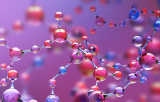Moravek
 |
||
Solutions offered by Moravek include
Website : www.moravek.com
| ||

Reducing agents
There are a number of reducing agents such as DTT (dithiothreitol), DTE (dithioerythritol), L-glutathione (GSH), TCEP (Tris (2-carboxyethyl) phosphine hydrochloride), 2-mercaptoethanol. By definition, reducing agents are elements or compounds that give an electron to an oxidizing compound. A compound can therefore be "reduced" (lose an electron) to create an "oxidized" state and the reaction can usually be reversed by "oxidizing" (giving an electron) a compound back to its "reduced" state. At the protein level, reducing agents are often essential for cleaving the disulfide bonds between the amino acids in cysteine. This effect is probably felt most often by non-scientists in the form of a chemical perm, in which the hair is chemically straightened (reducing the disulfide bonds that cause the hair to curl), then curled (oxidized to restore these disulfide bonds) into a specific structure. Because of the difficulty in reducing disulfide bonds that are deeply buried, reduction is often performed in the presence of high temperatures or denaturants such as guanidine-HCl or urea to help linearize the protein so that the reducing agent can work more effectively.


